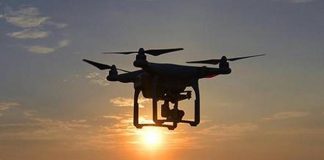NOVEMBER 18, 2018
 A young girl brushes off snow on the Fearless Girl statue in lower Manhattan on Thursday, Nov. 15, 2018, in New York. – Wong Maye-E/AP Photos
A young girl brushes off snow on the Fearless Girl statue in lower Manhattan on Thursday, Nov. 15, 2018, in New York. – Wong Maye-E/AP Photos
The weather will cooperate for a majority of those traveling by road or air for the Thanksgiving holiday, with some exceptions in the northeastern and western United States.
The American Automobile Association (AAA) is projecting that 54.3 million will travel 50 miles or more away from home for the Thanksgiving holiday this year.
Even in the absence of disruptive weather, the sheer volume of vehicles on the road in congested metro areas may cause travel time to double, triple or quadruple, according to AccuWeather Senior Meteorologist Alex Sosnowski.
People traveling for the holiday can download the AccuWeather app to find out exactly when the weather could add further slow downs to their journey.
 Thanksgiving travel – AP / Accuweather
Thanksgiving travel – AP / Accuweather
Snowflakes to fly in Northeast
The early taste of winter is expected to continue across the Northeast with batches of snow sweeping through the area and possibly lead to slick travel on occasion in the days leading up to Thanksgiving.
Motorists should prepare for possibly slick and snow-covered portions of interstates 75, 81, 87, 90, 91 and 95 in the days ahead.
The greatest disruptions to travel may occur Monday night into Tuesday from portions of Pennsylvania to Maine as a storm takes shape and lays a swath of accumulating snow.
Snow showers will also riddle the eastern Great Lakes and central Appalachians on Tuesday, potentially reducing visibility on the roadways.
 Yet another round of snow showers is expected across interior areas at midweek.
Yet another round of snow showers is expected across interior areas at midweek.
“There is concern for snow squalls to greatly reduce visibility and quickly coat roadways on Wednesday’s busy travel day across the interior Northeast,” according to AccuWeather Meteorologist Steve Travis.
“These squalls may not just be limited to areas downwind of the Great Lakes but may streak eastward to northeastern Pennsylvania and/or the Hudson Valley and western New England.”
Snow squalls may only occur for a fraction of Wednesday but can create dangerous travel conditions in that short amount of time. These type of weather situations are notorious for causing chain-reaction accidents.
It is also possible for some snow to survive to a section of the New England coast at the end of the day.
Rain to dampen travel in southeastern Texas
Travelers in southeastern Texas may contend with reduced visibility and ponding of water on the roadways as downpours cross the area at the start of the week.
“There is the possibility of wet roads and perhaps minor airline delays in Houston,” Sosnowski added.
This includes on Monday afternoon, which is the worst time for Thanksgiving travel in the Houston metro area, according to AAA.
 A press of drier air will shunt the rainfall southward on Tuesday, leading to a good day for travel along the Interstate 10 corridor from San Antonio to Houston.
A press of drier air will shunt the rainfall southward on Tuesday, leading to a good day for travel along the Interstate 10 corridor from San Antonio to Houston.
This dry press may hold firm on Wednesday, with damp conditions likely being held to southern and coastal Texas.
Storm to arrive along West Coast at midweek
Reduced visibility from wildfire smoke will be the main concern for travelers in California on Monday and Tuesday.
However, a pattern change will bring needed rainfall to the state starting on Wednesday.
While rain is not normally a welcome idea during busy travel times and near the holiday, any rain with a lack of strong winds would greatly favor firefighting efforts and reduce the risk of new fires igniting, according to Sosnowski.
Despite the good news of rainfall, motorists will face slick roads as oil buildup from weeks of dry weather mixes with the rain.
Heavy snow is expected over the Sierra Nevada by the end of Wednesday. Travelers over I-80’s Donner Summit should anticipate snow-covered roads, reduced visibility and possible closures.
Rain will also spread into Portland, Oregon, and Seattle at midweek, heightening the risk of minor travel delays.
Courtesy/Source: Accuweather









































































































